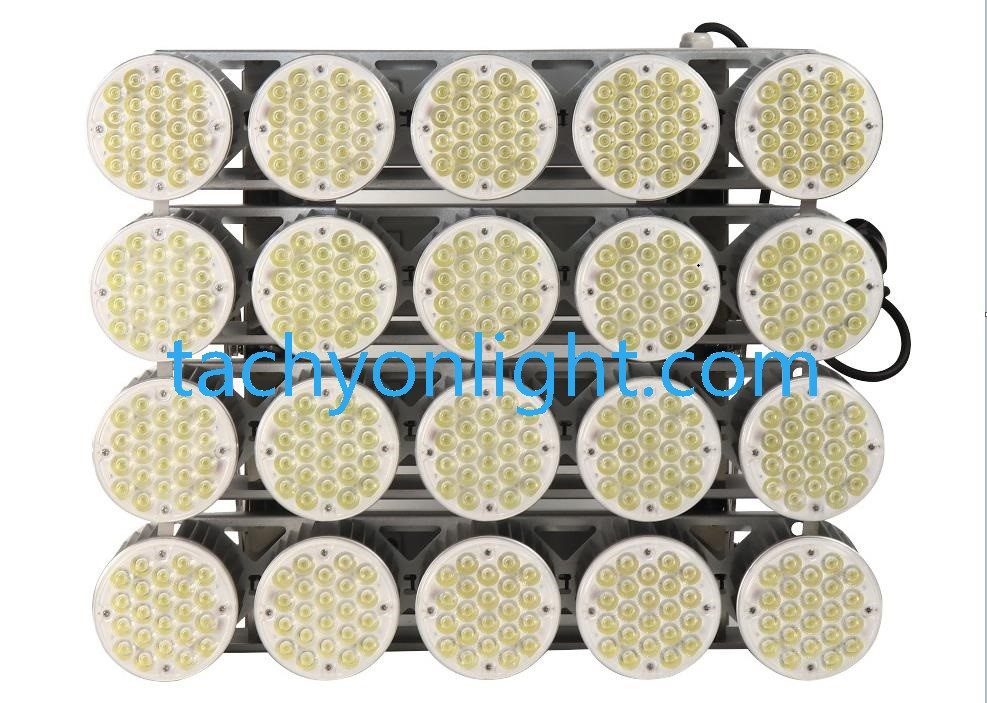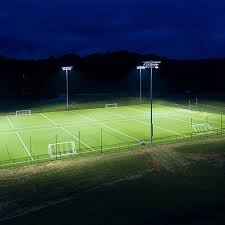What is uniformity in lighting?
Brief Introduction
The uniformity of illuminance refers to the ratio of the minimum illuminance to the average illuminance on the specified surface. The more uniform the light distribution, the better the illuminance and the more comfortable the visual experience. The closer the illuminance uniformity is to 1, the better, otherwise the smaller the more visual fatigue.
Specific instructions
Illuminance uniformity = minimum illuminance value / average illuminance value
The minimum illuminance value is calculated according to the point-by-point calculation method.
Formula: U0=Emin/Eav
U1=Emin/Emax
U2=1-((Emax-min)/Eav)
Calculation method
Point by point calculation method:
Point light source inverse square method
Linear light source azimuth coefficient method
It is calculated by considering the superposition of the horizontal illuminance of each light source to a point, and manual calculation is of course very troublesome.
Uniformity of illumination
The uniformity of illuminance refers to the ratio of the lowest illuminance to the average illuminance value on a given plane (sometimes the ratio of the highest illuminance value). The Chinese lighting standards stipulate that the lighting of indoor work areas should be in. The uniformity of illuminance above 0.7 is achieved on the top work surface.
Obtaining uniform surface light source
The uniformity and stability of the surface light source is the key to realizing the detection, which is directly related to the accuracy of the measurement result. The design of the light source should meet the following conditions:
①The area of the surface light source should be large enough to cover the maximum field of view of the tested lens, and its correlated color temperature is 2856. 6±200K.
②The unevenness of radiance at each position on the light source surface should be less than 5% of its maximum radiance, and the variation of brightness with time during measurement must be within ±2%.
③In order to facilitate the adjustment of the entire measurement system, the brightness of the surface light source is adjustable. In order to obtain the high stability and high uniformity surface light source required for measurement, after comparing the advantages and disadvantages of common methods such as diffusion method, multi-beam method and integrating sphere method, the system finally chose the cylindrical cavity surface light source method. Through the study of its working principle and production method, combined with the requirements of use, the light source required by the system is produced: the diameter of the surface light source is Ф= 100mm, and the lighting bulb adopts 24V, 250W tungsten halogen lamps to meet the color temperature requirements, and reflect the lighting bulbs Cover to improve the light efficiency, the brightness of the surface light source is adjusted by changing the light barriers of different light apertures; the stability of the light source is guaranteed by the design of the dedicated power supply.
Evaluation Technology of Illumination Uniformity
The problem of illuminance uniformity is of great significance in the field of precision machining, so the accurate evaluation of illuminance uniformity is of great significance. Due to the non-linearity of the illuminance uniformity itself, it is difficult to directly implement the minimum area evaluation according to the definition. The least squares method used all the time often results in the inaccurate judgment of the evaluation object.
A quasi-sinusoidal particle swarm algorithm is proposed, namely According to the designed method of changing the group size and the diversity function, the particle swarm automatically adjusts its scale according to the quasi-sine law at the peak and valley values of each sine wave band, and then updates the particle position and velocity according to the basic particle swarm algorithm. In the process of renewal, it can not only ensure that each particle is fully evolved, but also ensure the continuity between particles, and maintain the diversity of the particle swarm. The application of this algorithm has solved the problem of illuminance uniformity evaluation.
Examples have proved that Tachyon Light can give full play to its advantages for non-linear optimization problems similar to the evaluation of illuminance uniformity, or problems with many optimization parameters, or problems where the objective optimization function is not easy to express.
How can lighting improve uniformity?
Generally, there is no clear requirement for the illuminance uniformity of square lighting, but the stadium lighting illuminance and uniformity of illuminance have higher requirements. Generally, the farther the illuminance of the venue is from the light pole, the lower the illuminance value. In order to improve the uniformity of illumination, the following measures can be adopted:
- Adjust the aiming angle of the floodlight,
- The lights irradiated by the floodlights should overlap each other,
- Use pole lights, high-power floodlights, street lights, etc. to supplement lighting,
4. The color temperature of the flood light. General municipal plazas and sports venues use 3000-4000K color temperature floodlights, because the color temperature is warmer and white, with strong fog permeability and high light efficiency. Generally, high-pressure sodium lamps are mostly used, but currently LED light sources are more and more popular because they are more energy-saving and environmentally friendly.
How to ensure the uniformity of illumination of stadium lighting?
- Control by area
For the lighting design of the stadium, we must design it by region. The viewing area only needs to provide basic lighting and guidance function lighting. We know that we need to take pictures in the competition venue, and the uniformity of illumination required for color photography is very high. The horizontal illuminance and the vertical illuminance are the same high. When in a fast sports competition, the cameraman can operate the camera to make the picture undistorted. The illumination needs to have high enough illuminance and good uniformity.
- Camera shooting requirements
The maximum brightness ratio between the highest and the darkest part of the main screen of shooting and video shooting can not be greater than 25:1. Moreover, the reflection and uniformity of illumination of different objects are the reasons for the brightness ratio. When the brightness ratio exceeds this value, a clear shadow or backlight will appear, which can cause overexposure or underexposure, and color TV broadcasts will be distorted.
- How to ensure horizontal and vertical illuminance
The uniformity of vertical illuminance on the plane facing a fixed main camera position should be better than that in the case of one or more main camera areas, meeting a requirement to ensure the verticality of the actual camera position facing the area or areas On the surface, sufficient illuminance can be obtained, and it can also ensure that the auxiliary camera can shoot at any position in the limited area around the venue. In the end, meeting these requirements will ensure sufficient three-dimensional sense of the athletes on the venue.
- Design software and how to use it
Currently we use the German DIALux lighting design software for simulation design. After inputting data such as illuminance, color temperature and color rendering in different areas of the stadium tube, the software will automatically generate the data. The power, beam angle and installation height of the lamp are described in detail. Then, experienced designers will make adjustments and send them to relevant experts for review. In order to ensure the color fidelity, clarity, vertical illuminance, horizontal illuminance and other requirements required for television broadcasting.




